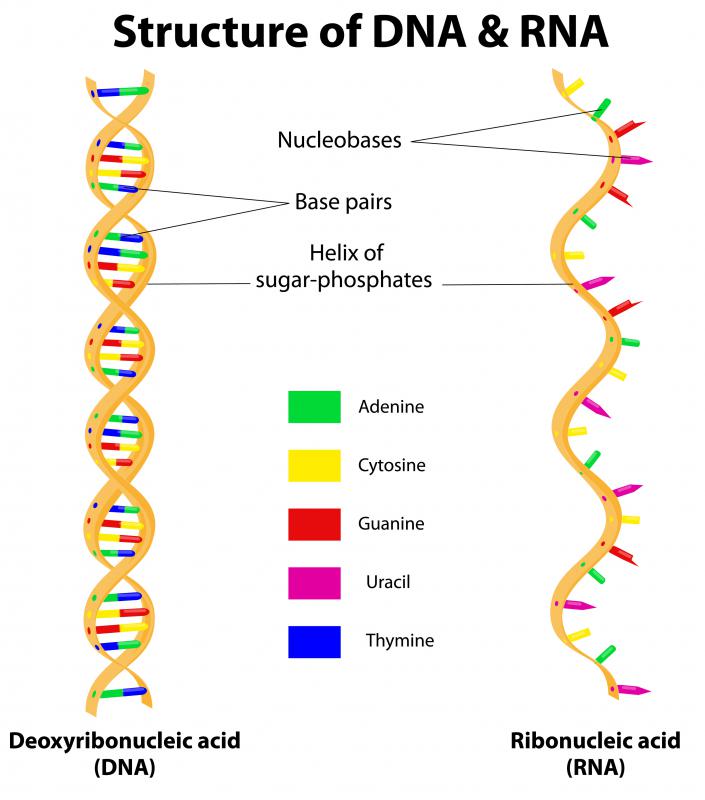At TheHealthBoard, we're committed to delivering accurate, trustworthy information. Our expert-authored content is rigorously fact-checked and sourced from credible authorities. Discover how we uphold the highest standards in providing you with reliable knowledge.
What Are DNA Enzymes?
DNA enzymes are responsible for the cell replication process. They are different proteins that copy genetic code to produce new cells. In some instances, DNA enzymes can also be used to repair or correct DNA strands. Enzymes can be obtained to replicate DNA strands artificially and are usually grouped into families.
Cells use enzymes in order to grow and reproduce. They are essentially protein that is converted into energy. DNA enzymes work by copying the strands and genetic code contained within cells. Enzymes produce new cells that are identical to the ones they duplicate from.
One of the common groups of DNA enzymes is called polymerases. This group is involved in the replication and synthesis process. DNA is duplicated by creating an extension strand that is an exact duplication of the original code.

Polymerases are proteins that automatically correct any errors in DNA replication. The enzymes actively "proofread" during the replication process and stop strand extensions if a code error is detected. Polymerases then remove nucleotides from the strand. The enzymes start the process over again with the correct code. Error rates for polymerases are very low.

This group of enzymes actually disassembles or unbinds DNA strands in order to read the code. Polymerases are primarily responsible for creating new DNA and cells that contain identical genetic factors. This is a process that is ongoing within the human body. It can be duplicated artificially, especially with cloning experiments.
Artificial replication is done with a process called a polymerase chain reaction. Lab researchers focus on a strand of the DNA and use a polymerase enzyme in combination with a primer. The enzyme and primer work to separate the DNA strand and start the replication process.
Disassembling DNA strands is done by locating certain points along the strand. Enzymes or proteins accumulate in order to split strands into two sections. In effect, polymerases help "open" up DNA strands in order to gain access to code and start the replication process.
Some enzymes work to repair DNA strands. These types of proteins actively travel along a strand to check for any errors or injuries. They repair the strands that are damaged by creating new cells with the correct DNA inscriptions.
There are DNA enzymes that attach to certain portions of the strand. They look for consistencies and repetition along the strands. These enzymes are called "binding proteins" that prevent other organisms from gaining access.
AS FEATURED ON:
AS FEATURED ON:












Discuss this Article
Post your comments